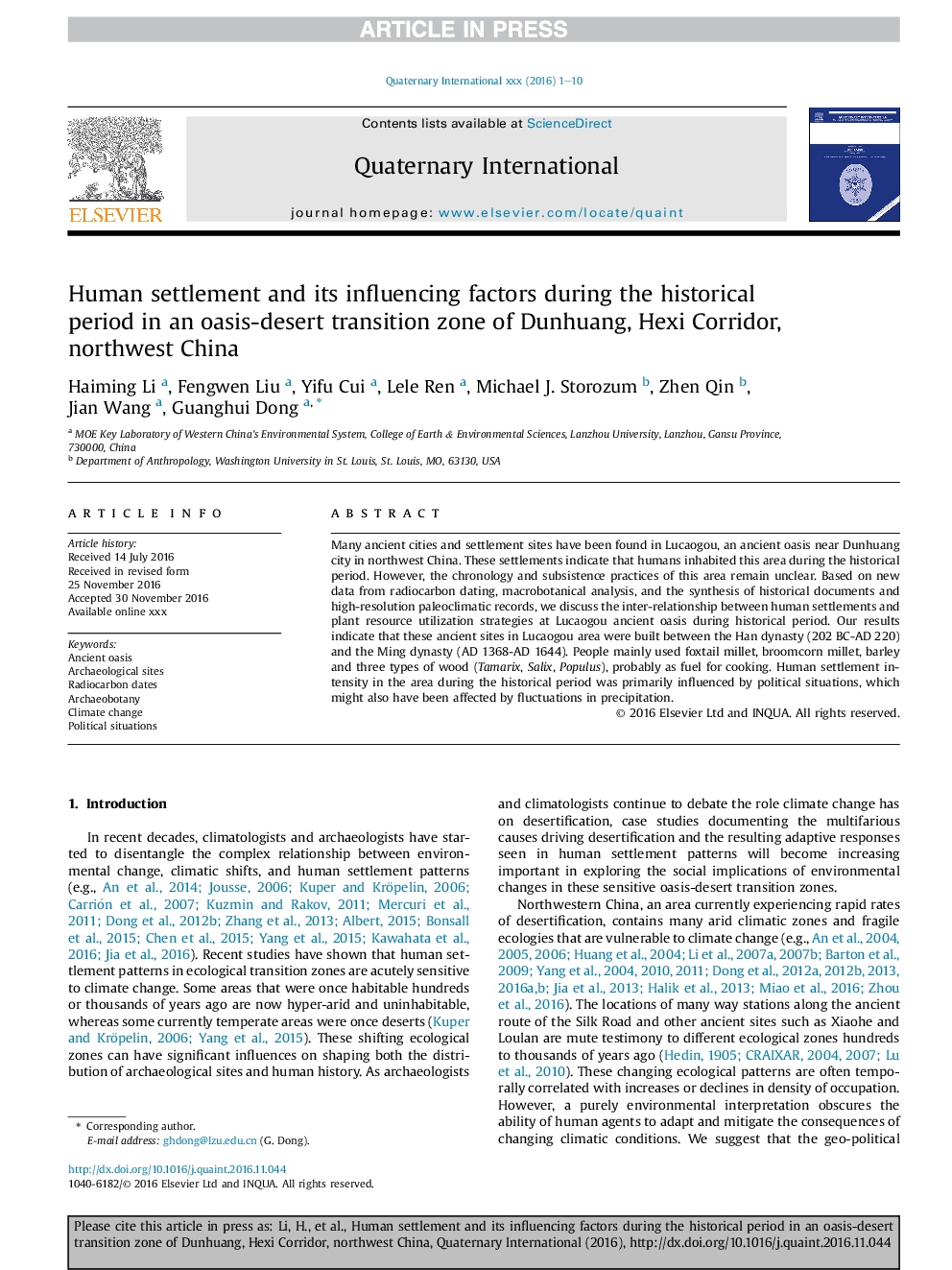| Article ID | Journal | Published Year | Pages | File Type |
|---|---|---|---|---|
| 5112949 | Quaternary International | 2017 | 10 Pages |
Abstract
Many ancient cities and settlement sites have been found in Lucaogou, an ancient oasis near Dunhuang city in northwest China. These settlements indicate that humans inhabited this area during the historical period. However, the chronology and subsistence practices of this area remain unclear. Based on new data from radiocarbon dating, macrobotanical analysis, and the synthesis of historical documents and high-resolution paleoclimatic records, we discuss the inter-relationship between human settlements and plant resource utilization strategies at Lucaogou ancient oasis during historical period. Our results indicate that these ancient sites in Lucaogou area were built between the Han dynasty (202 BC-AD 220) and the Ming dynasty (AD 1368-AD 1644). People mainly used foxtail millet, broomcorn millet, barley and three types of wood (Tamarix, Salix, Populus), probably as fuel for cooking. Human settlement intensity in the area during the historical period was primarily influenced by political situations, which might also have been affected by fluctuations in precipitation.
Related Topics
Physical Sciences and Engineering
Earth and Planetary Sciences
Geology
Authors
Haiming Li, Fengwen Liu, Yifu Cui, Lele Ren, Michael J. Storozum, Zhen Qin, Jian Wang, Guanghui Dong,
